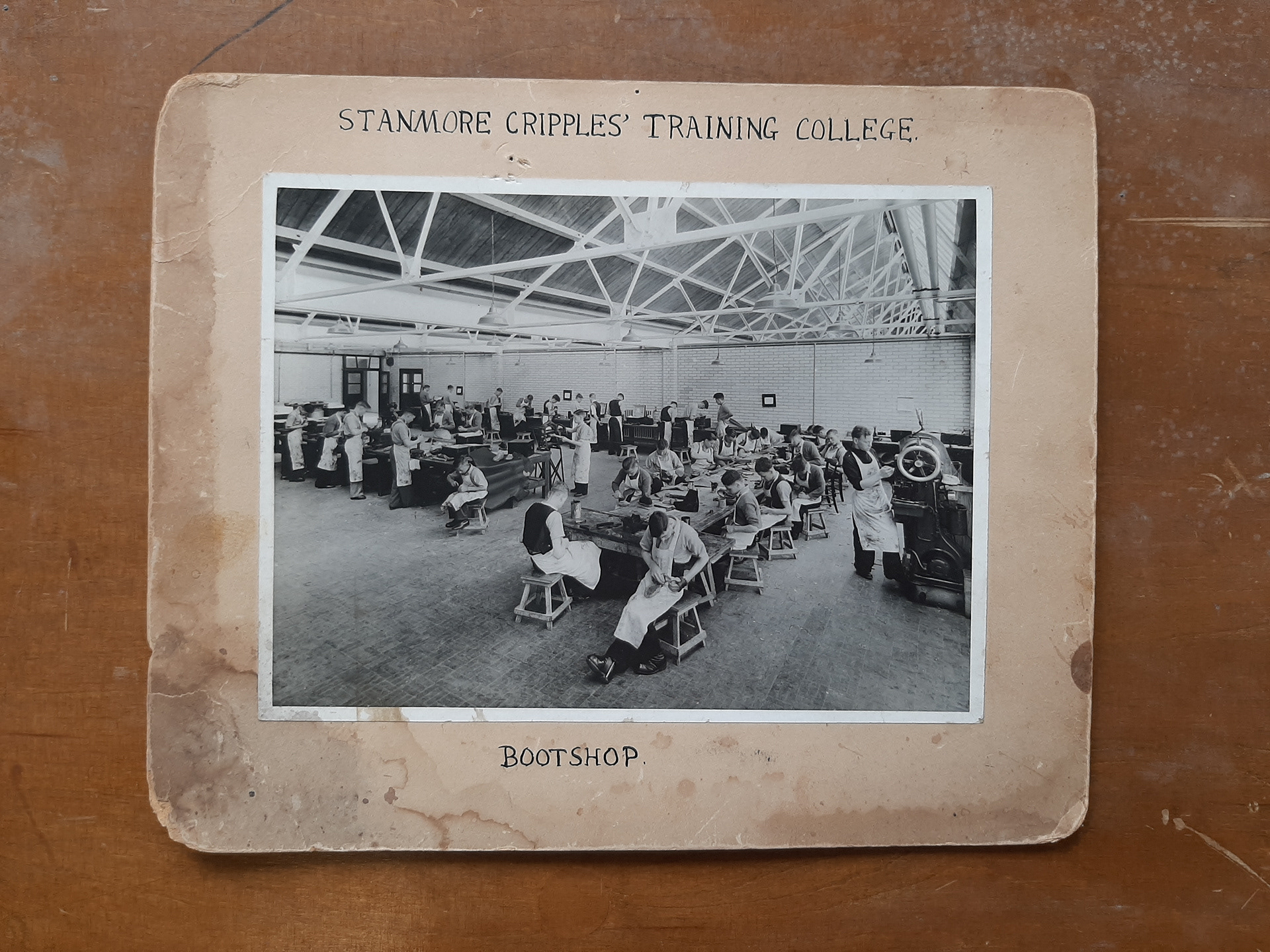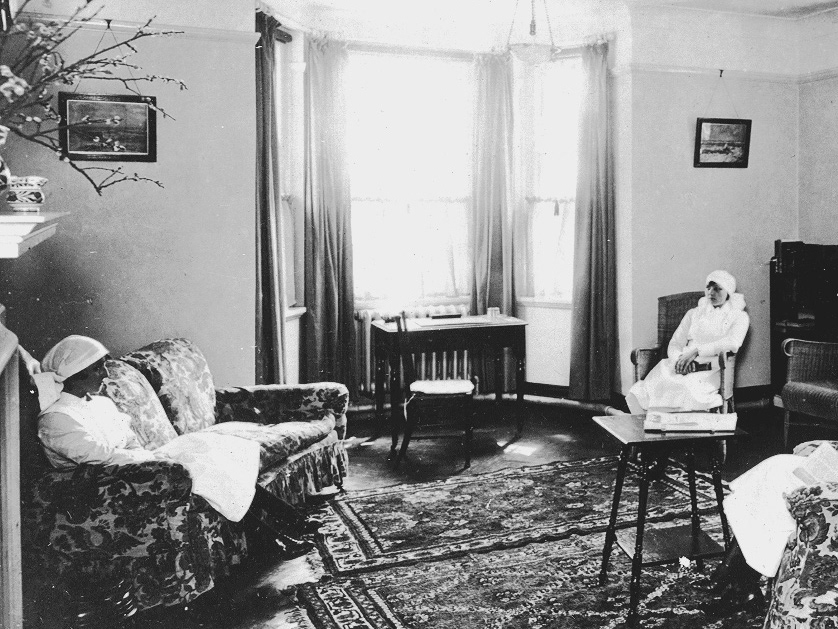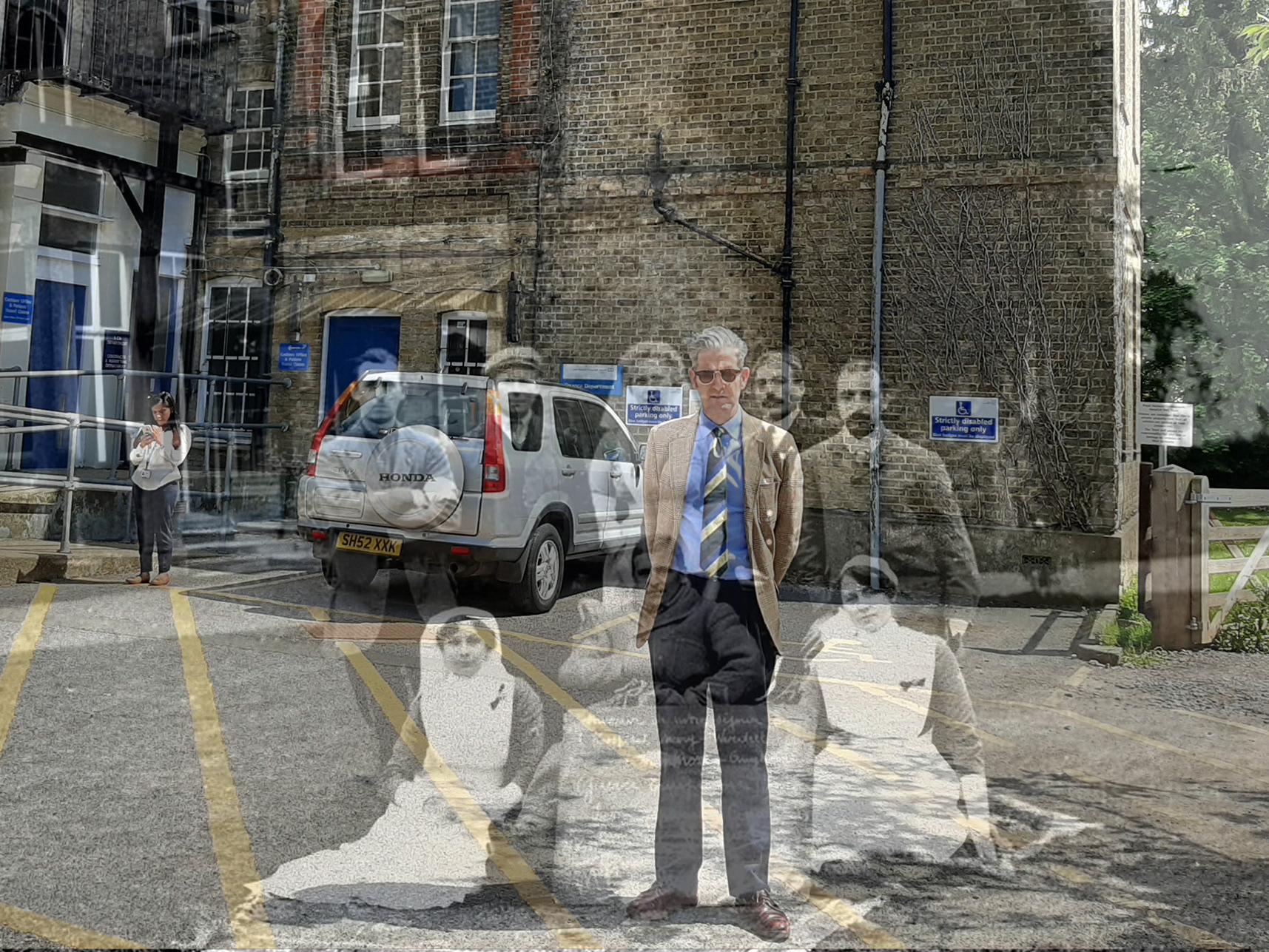Nicola Lane /2019
The Old Wooden Ambulance / Jan Letocha 2019
Nicola Lane 2019
Nicola Lane 2019
Corridor to the Disability Foundation / Nicola Lane / 2019
The Obelisk / Nicola Lane / 2021
Copy negative of 1914 photograph / Courtesy RNOH
Negative to Positive / Nicola Lane 2020
"Victoria by the Grace of God" / Nicola Lane 2019
Nicola Lane / 2020
'Adventures in a London Hospital' by Frank Ruck / 1905 / Courtesy RNOH / For more information about the RNOH and Great Portland Street go to: https://ezitis.myzen.co.uk/rnohgps.html
Frank Ruck's map of his Ward / Courtesy RNOH
Frank Ruck's 1966 letter / Courtesy RNOH/ Nicola Lane 2019
Samuel Fielden Ward Nursing Station with Nurse Storey, Frank Ruck 1905 / Courtesy RNOH
Samuel Fielden Ward, 1905 "The dark boy in the photograph is, I believe, a fellow named Demingo Durfoe. (I took the pictures.)" Frank Ruck / Courtesy of RNOH
RNOH Admissions Nurse with Frank Ruck's photograph of 'Nurse Storey' / Nicola Lane
Nurse Fiona with Frank's photograph inscribed 'Nurse Cross': her name or her mood? / Nicola Lane 2019
Wardell Convalescent Home card / Courtesy RCP
Page from the 1895 Wardell Convalescent Home pamphlet. / Courtesy RCP
Filming top floor of Eastgate House / Jan Letocha / 2019
Searching the top floor / film still / Nicola Lane 2019
Searching the top floor."The past is the key" / film still / Nicola Lane 2019
Found copy negative / Nicola Lane 2019 / courtesy RNOH
Negative to Positive / Nicola Lane 2019
The 'Old Operating Theatre' in the RNOH turret / film still / 2019
May 11, 1889. 'The Queen, The Lady's Newspaper' / © The British Library Board / British Library newspaper archive





